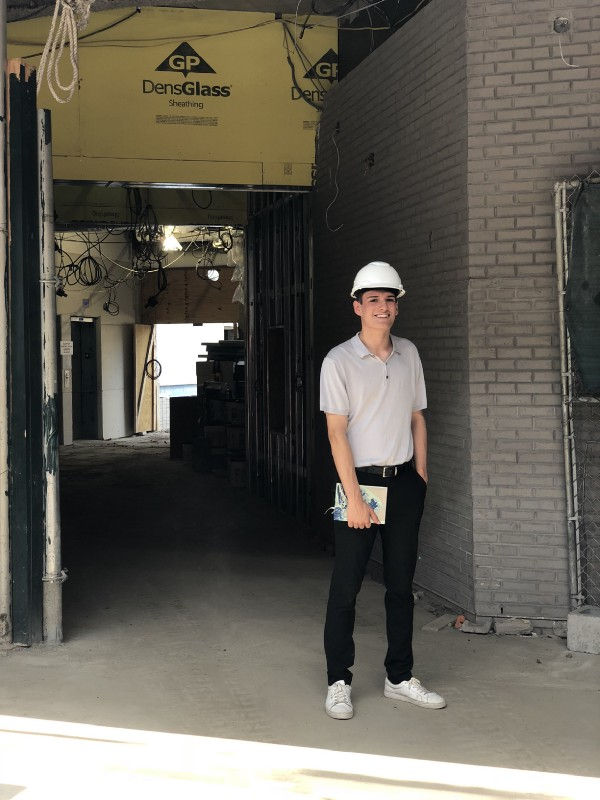Engendering Confidence for Leadership in Community Reduces Poverty
- Emilie Davis
.png/v1/fill/w_320,h_320/file.jpg)
- Sep 11, 2015
- 4 min read
By Zoe Stein, Washington and Lee University (2017)
This summer I served as a mentor for Monster Slayers, a summer program targeting social, emotional, and leadership skills in Diné (the preferred name for Navajo) youth on the Navajo Nation reservation. The Diné culture dates back to 1100 AD. In 1864 the Diné were subjected to the “Long Walk,” in which they were imprisoned and violently forced to relocate 300 miles away from their homeland in Arizona and New Mexico. Reservation communities were formed in the 1920’s, and there are currently about 300,000 Diné living on the Navajo Nation reservation (Navajo History). Because of the long history of oppression and assimilation of native populations, they have disproportionately higher rates of school drop-outs, suicide, and poverty. The dropout rate for native populations is 7% compared with 3% for all students (National Indian Education Association). Homicide and suicide account for 75% of deaths for native youth ages 12-20 (Center for Native American Youth).

Zoe Stein (W&L) pictured with students participating in Monster Slayers. The people of the Navajo Nation face extreme poverty, racism, mental health issues, and a lack of resources but Zoe saw a great potential in the students to improve their community.
The program I worked with is called Monster Slayers, and its mission is for students to take the support and skills formed and use them to slay the monsters harming the community, such as poverty, substance abuse, and domestic violence. About twenty students from Sanders Valley High School participated in the program, and one of the highlights was visiting Ghost Ranch, a retreat camp focusing on team building activities and stepping outside comfort zones.
Ian, a leader at Ghost Ranch, placed a circular piece of rope on the ground, about two feet in diameter. The twenty Monster Slayers were instructed to fit themselves inside the boundaries of the rope, including all feet and extremities. Many methods were attempted and a few tears from laughter were shed before the students decided that standing on each other’s shoulders was the best possibility. It took about four attempts of the piggy back method until everybody fit inside the circle. With many cheers about the success and relief to no longer be smelling each other’s body odors, Ian congratulated us and then placed the rope on the ground again, this time half the size.
“See if you can all fit into it now!” he said jokingly.
Many students groaned, and Kai, a particularly outspoken one exclaimed, “No way, that’s impossible.”
Then, to everyone’s surprise, one of the quieter jokesters of the group, Michael, stepped up and said he had an idea of how to fit everyone inside the rope. Grabbing a few friends, he ordered them to stand on each other’s feet in alternating directions, and holding each other’s arms so they could balance. The method seemed to work, and after only two attempts the entire group was able to fit into the small space.
Michael’s innovation and leadership is exactly what the Monster Slayers program aims to bring out in students. He could have easily not spoken up about his idea because the majority of students expressed it was impossible. Instead, he had the confidence to speak up and try his idea, and it worked. Not only did he have the innovation to come up with the idea and the confidence to share it, Michael had the leadership skills to guide the rest of the group in successfully executing the idea.
I saw firsthand in Sanders how invaluable this innovation, confidence, and leadership can be in the community. One monster harming the Sanders community is alcoholism. An overwhelming number of people suffer from alcoholism, and the local taverns and bars were making the problem worse by having alcohol readily available and being so concerned with making a profit that little action was taken about violence and other crimes taking place on the property. Many individuals in the community noticed the problem, but only a few individuals had the confidence and leadership skills to take action, and their action resulted in the three local bars and taverns being shut down by the state.
The youth in Sanders are aware of the monsters harming their community. They see it every day in their families and schools, and they have the capacity to slay those monsters. Even when structural obstacles stand in the way, the people are creative, motivated, and well-intentioned at finding ways to navigate these hurdles. It is heartbreaking to see the adversity the Diné community faces. The people were historically oppressed, killed, relocated, and forced to assimilate. Today, the community faces extreme poverty, racism, mental health issues, and a lack of support and resources from the government. This list only begins to scratch the surface, but even so, I saw a great potential in the students I worked with this summer to improve their community.
Michael taking initiative in the rope activity was only one of the many instances I saw of the group being leaders and friends to each other. In the two months I spent in Sanders, many students suffered more abuse and loss than I have seen in my life. Yet, they showed astounding resilience. Successfully leading your team to victory in capture the flag, playing the guitar in front of a crowd for the first time, or expressing your dream job in a talking circle might seem like feats that can bring at most small personal improvement. However, these skills put into a community context can bring about change. The high rates of suicide, poverty, and school drop outs can only improve if some initiative is taken and the whole community is able to improve. Investing in and supporting people in community pays off for the whole community in ways that cannot be easily measured.



